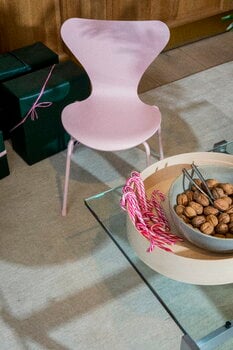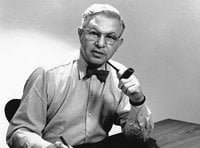Fritz Hansen’s Series 7 children’s chair is a smaller version of the iconic chair model 3107 designed by Arne Jacobsen. The Series 7 children’s chair comprises the distinctive laminated veneer seat and slender frame, only scaled to a size suitable for children. Available in a variety of colours, the stackable Series 7 children’s chair adds functional timeless elegance to the kids’ room.
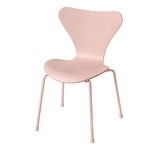
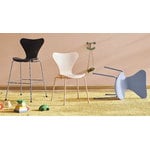
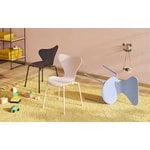
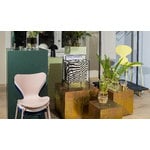
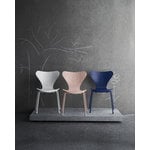
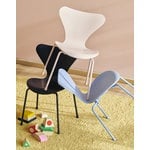
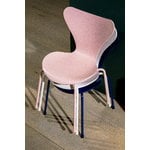

Series 7 children's chair, rose
Fritz Hansen
Description
Fritz Hansen’s Series 7 children’s chair is a smaller version of the iconic chair model 3107 designed by Arne Jacobsen. The Series 7 children’s chair comprises the distinctive laminated veneer seat and slender frame, only scaled to a size suitable for children. Available in a variety of colours, the stackable Series 7 children’s chair adds functional timeless elegance to the kids’ room.
Product details (7)
- Colour
- Rose
- Width
- 40 cm
- Depth
- 40 cm
- Height
- 60 cm
- Seat height
- 34 cm
- Seat material
- Ash veneer
- Base material
- Metal
- Product ID
Designer
Arne Jacobsen (1902-1971) is the most celebrated post-war Danish designer and architect. He graduated from the School of Applied Arts in 1924 and from the Royal Danish Academy of Fine Arts, where he studied architecture, in 1927. Arne Jacobsen worked actively both as an architect and as a designer and received many prestigious awards for his designs, including C. F. Hansen Medal and the Grand Prix of Milan XI Triennale.
Jacobsen’s most famous project was the Royal Hotel in Copenhagen (1956-1960), for which he designed every detail from textiles and lamps to cutlery and furniture. The AJ lamps, designed for the Royal Hotel and manufactured by Louis Poulsen, are a fine example of his streamlined and elegant style. The cutlery designed for the Royal Hotel and produced by Georg Jensen, represents a stylish design that is still today much praised. Also, the famous Egg and Swan chairs were designed for the Royal Hotel. As often happened with Arne Jacobsen’s designs, they were initially realized for a certain project and only later put into serial production – the same happened for the AJ lamps, the cutlery and the furniture he designed for the hotel. Royal Hotel was an extremely important project for Jacobsen because he could finally put his theories of integrated design and architecture into practice.
Jacobsen is well-known also for the Cylinda Line range, designed for Stelton in 1967. Since the very beginning, Cylinda Line has been an undisputed icon of Scandinavian design and today the range is part of numerous permanent collections in design museums all over the world.
• Read our article on Arne Jacobsen >
View all productsReviews (1)
5
Based on 1 reviews
-
A
anonyymi
254 days ago
Sustainability
The Product Sustainability Framework, our criteria of sustainable design, helps you find the most sustainable products in our selection. Read below which sustainability criteria this product has met.
Working conditions & labour 9/9
-
Equal opportunities for all employees
-
Commitment to UN Global Compact, fair compensation for all employees
-
Corporate responsibility requirements defined and communicated for suppliers
-
Systematic work for improved inclusion and well-being in the workplace
-
Transparent supply chain
-
Suppliers' compliance to a code of conduct ensured
-
Direct suppliers audited and certified
-
Compliance to the UN Guiding Principles on Business and Human Rights ensured in the supply chain
-
Support for community involvement in the supply chain
Eco-friendly production 6/9
-
Fair and resource-wise water-use in production
-
No incineration or landfilling of returned items
-
No use of endangered species as materials
-
No direct environmental emissions or waste (excl. GHGs) from production
-
Material-efficient and ecological packaging
-
No potentially harmful chemicals used in own production
-
The sustainability of direct suppliers' production is addressed and monitored
-
Production and material sourcing that respect biodiversity, animal rights, and natural ecosystems
-
Positive impact on nature’s well-being through operations that regenerate natural ecosystems
Climate impact 5/8
-
Company's direct greenhouse gas emissions identified and commitment to reduction
-
Product's carbon impact identified and commitment to reduction
-
Guidance on energy- and eco-efficient use of the product
-
Contribution to climate initiatives beyond the brand’s direct operations
-
Carbon footprint of the product calculated and goals set to reduce it
-
Low-carbon or compensated transportation
-
100 % renewable energy in own production and operations
-
Carbon neutral or carbon negative product
Sustainable materials 6/6
-
Sustainable and long-lasting material choices
-
No harmful or hazardous substances
-
Responsible raw material sourcing and production
-
Materials suited for circularity: monomaterials, recyclable finishings, renewable or recycled contents etc.
-
Ecological materials: natural, biodegradable, recyclable or recycled contents
-
Outstanding materials in terms of innovativeness, responsibility, sustainability and circularity: local production or sourcing, 100 % recycled content, C2C-certification etc.
Circular design 5/5
-
High aesthetic quality promoting long-term use of the product
-
Technically durable product design and material choices
-
Design for enduring life-long quality
-
Design and support for product maintenance, repair and upgradability
-
Innovative circular design solutions: circular service system, resale platform, remanufacturing, collection of used products, etc.







